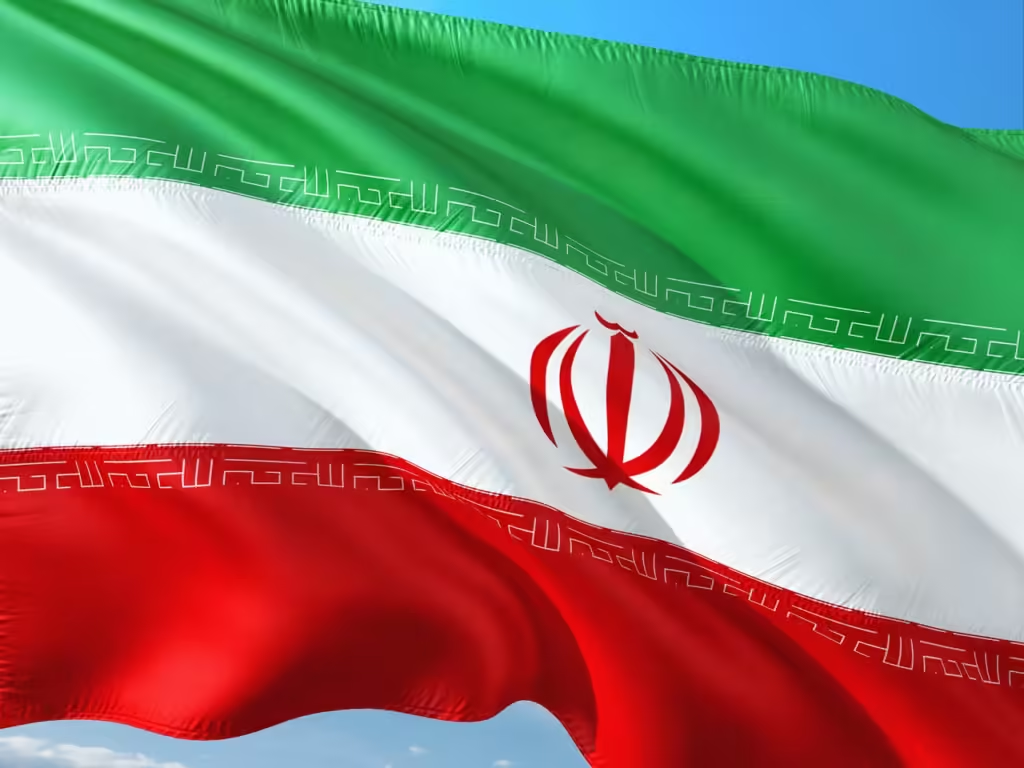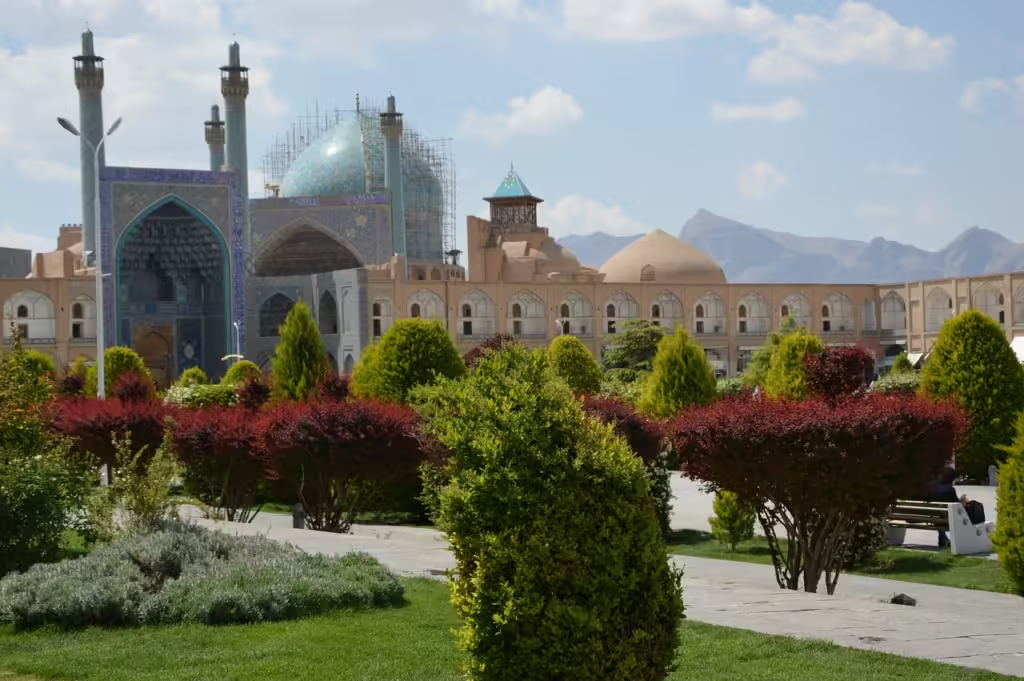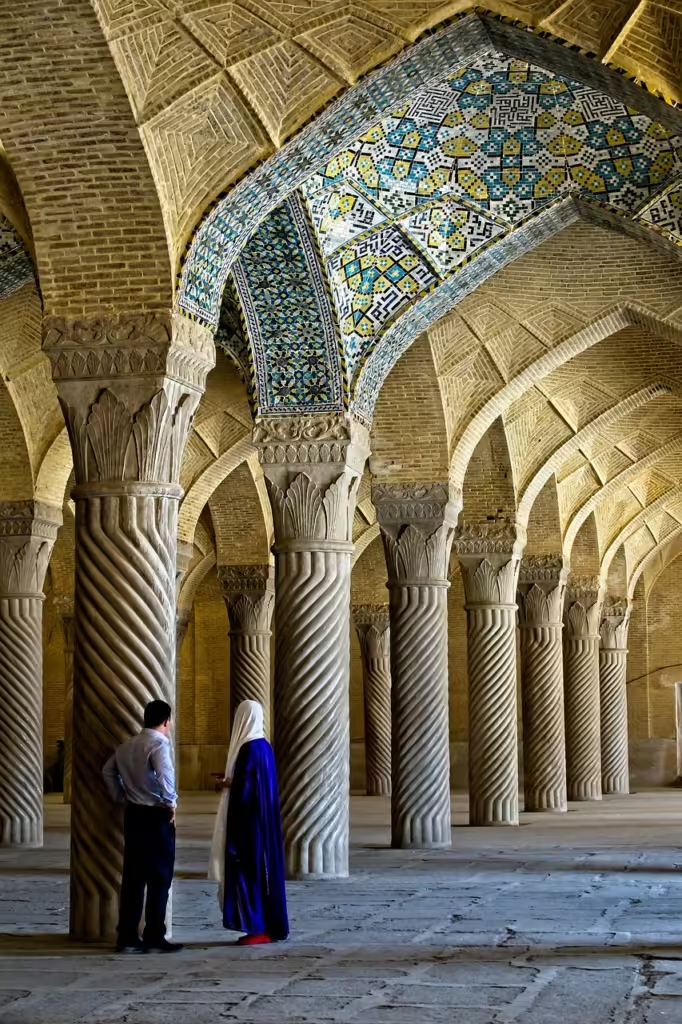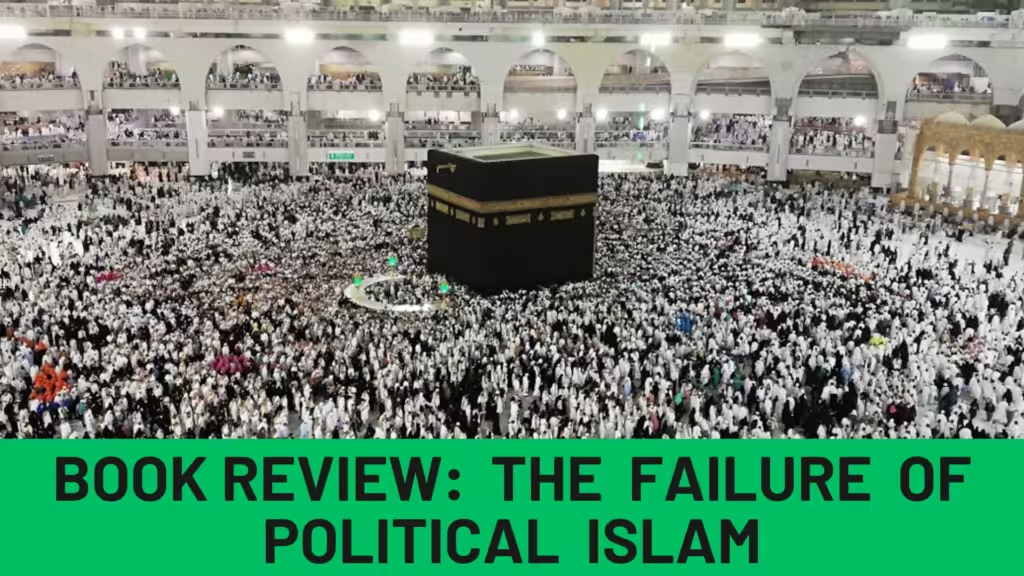In his book Kashf al-Asrar (1941), Ayatollah Khomeini acknowledged, “The wilayah of the mujtahid … has been the subject of discussion among mujtahids, since the first day—both regarding whether it is a foundational issue or not and regarding the limits of the wilayah and its sphere. This [matter] is one of the branches of jurisprudence for which the disputing parties bring forward arguments, most of which are hadiths attributed to the Prophet and the Imams” (Akhavi: 1996). The fact that Khomeini acknowledged it is of substantial importance, although it is not surprising. In fact, for almost ten years of his rule as Supreme Leader of Iran, he had to confront various Jurists’ opposition to his notion of Velayat-e-Faqih – both theological and regarding its implementation.

Background
Khomeini’s interpretation of the Guardianship of the Jurists (Velayat-e-Faqih) was an aberration in Shi’ite Jurisprudential Thinking. Though the origins of the notion can be traced to the times of Shi’i Imams, as traced by Khomeini himself, the interpretation that puts Jurists at the helm of a State was merely a century old when presented by Khomeini. First presented by Ayatollah Naraqi (Akhavi, 1996), a leading Iranian Marja’-e-Taqleed, in the nineteenth century CE, it was the foundational basis on which Khomeini relied in his book Velayat-e-Faqih: Hokumat-e-Islami, mentioning him numerous times in it, against the established tradition of Twelver Shia Jurisprudence.
The theological opposition to Khomeini’s interpretation was substantial, since it came from the most prominent Jurists, including a few Marj’-e-Taqleed. (Ghobadzadeh, 2014) It came from the Twelver Shia Jurists from Lebanon, Iraq and Iran. It is interesting to note that the linchpin Jurist for opponents of Khomeini’s interpretation has been Shaykh Murtada Ansari, a pupil of Ayatollah Naraqi who succeeded and surpassed the stature of his master, becoming Marja’-e Motlaq-e Taqleed, or the absolute source of imitation(Akhavi, 1996).
However, the theological opposition was extremely diverse, consisted of various interpretations and differed in the nuances, methodology of the conclusions drawn by Khomeini, interpretation of historical references, implementation and so on. As my research intends to show, the theological opposition was not aloof from the empirical experiences of the jurists and the realities. For the clerics criticizing from comfortable positions in Iraq and Lebanon, who didn’t have to face the wrath of the Iranian state, criticism of Khomeini was harsh. For the clerics in Iran, the criticism could bring house arrest or imprisonment. Hence the theological opposition evolved differently in Iran. It changed its nature as the interpretation of Khomeini began to be implemented.

The theological opposition mainly took place after the Islamic Revolution and the return of Khomeini to Iran in February 1979. The most traditional and prominent Twelver Shia Jurists never supported the political leadership of the clergy. Moreover, the fact that Khomeini himself was unable to become a Marja’-e-Taqleed played out against the legitimacy of his interpretation. Though most of these traditionalist Jurists carried on the tradition of political quietism – a tradition of maintaining political silence, some later became vocal.
The major Iranian dissidents included Ayatollah Shariatmadari, Ayatollah Golpaygani, Ayatollah Hassan-Qomi, Ayatollah Muhammad Shirazi, Ayatollah Muhammad Rowhani, Ayatollah Reza Sadr, Ayatollah Salehi-Najafabadi, Ayatollah Montazeri among others. Iraqi dissidents included Ayatollah Khoei, Ayatollah Sabziwari and Ayatollah Ali Sistani. The opposition continued well in the 21st century, by a few clerics including Ayatollah Seyyed Hossein Kazemeyni-Boroujerdi, Montazeri and Ayatollah Salehi-Najafabadi.
The nature of the theological opposition to Khomeini’s interpretation is rooted in the history of the clerical institutions, including that of Marja-e-Taqleed. Also important is the history of the clerical involvement in debates on politics and the nature of the state, including those that took place during the Constitutional Revolution in the early 20th century. Also, to understand the structural nature, it is important to understand basic Twelver Shia Theology and the dialectical nature of it. The dialectics of interest over here are those which took place between the semi-Akhbari and non-Usuli-oriented clergy on one hand and the Usuli-oriented clergy on the other. The strict classification of Usulis being pro-constitutionalism and the semi-Akhbari and non-Usuli being anti-constitutionalism may prove to be futile.
Understanding Velayat-e-Faqih
A K Moussavi in his article, The Establishment of Position of Marja’-e-Taqleed in Twelver Shi’ite Community points out the highly centralized nature of the institution of Marja’-e-Taqleed that came into existence in the 19th century and as not to be found in classical Shi’ism. The high centralization ensured the triumph of the Usuli School over the Akhbari School. Mangol Bayat, in his book Mysticism and Dissent, describes the role of Muhammad Baqir Bihbihani in the 18th century in the downfall of the Akhbari School.
According to him, Taqleed was made incumbent upon the believers to centralize the school and root out the school of Shia Orthodoxy. However, the stature of Marja’-e-Taqleed is obtained by a highly democratic process, as is pointed out by numerous authors such as Naser Ghobadzadeh, Shahrough Akhavi et. al.
Bayat attributes the evolution of the Usuli school to the tradition of dissent in Shi’i Islam. This is in line with other authors who emphasize the importance of dissent in Shi’i Islam. However, Bayat also emphasizes the dissent from within the ranks of the religious institutions against the high-ranking Clerics who were instrumental in the centralization of the institution. As a result of high centralization, the position of Mujtahid became a hereditary one as time passed. By the 19th century, the official hierarchy of the Ulamas came into being.
In an Islamic Society, laws are given extreme importance. As Arjomand points out, in his essay The Ulama’s traditional opposition to Parliamentarianism (1907-09), the origins lie in the Quran itself, but the entrenchment took place during the rule of the Umayyads and Abbasids. The importance given to laws makes the Jurists an important part of the Muslim Societies.

The tradition of dialectics in Usuli school is evident in the process of establishment and institutionalization of the school, as is shown by Naser Ghobadzadeh in Religious Secularity. This very tradition led to the further centralization of the Usuli school. For instance, the dialectics led Bihbihani to believe that the Mujtahid can be considered as vice-gerents of the Prophet due to their ability to establish proof. Ghobadzadeh also describes the contending arguments of Jurists during the years of revolution.
The five major Ayatollahs he deals with are Ayatollah Tihrani, Ayatollah Akhund Khorasani, Ayatollah Mazandarani, Ayatollah Nai’ni and Ayatollah Mahallati. Shahrough Akhavi also deals with dialectics regarding the system of governance in his article Contending discourses in Shi’i Law on the doctrine of Velayat-e-Faqih.
The Jurists’ interpretation that all kinds of states were illegitimate during the Occultation period was also established gradually by Jurists through dialectics (Bayat, 1982). Though there were some deviations such as that of Naraqi, the interpretation remained popular among the Jurists. The dialectics relating to the system of government took a surge during the Constitutional Revolution (1905-1911). Many prominent Jurists were influenced by the Western Ideas of popular sovereignty, limiting the power of despotic kings, etc. The ideas when amalgamated with the traditional interpretations, resulted in a unique idea. The idea incorporated popular sovereignty and the Guardianship of the Jurists as visible in the Constitution.
A theological discourse was unleashed during the Constitutional Revolution between the Jurists (Ghobadzadeh, 2014). The discourse was complex and cannot be limited to that between pro-constitutionalists and anti -constitutionalists. Many new theories were presented by the most prominent Marja’ at the time, including Akhund Khorasani. Many arguments were presented by staunch anti-constitutionalists, including Ayatollah Nuri, who sided with the Shah. At the centre of the discourse was the system of governance valid during the Occultation period of the twelfth Imam.
An account of the discourse regarding the determination of the validity of constitutionalism is presented by Amirhassan Boozari in his book Shi’i Jurisprudence and Constitution. The importance of the works of Shaikh Ansari is visible in these dialectics. Boozari implicitly attributes to him the ideas of Individual rights, self-determination, and the notion of a ‘Just Sultan’ among other notions that were heavily discussed during the revolution by the Jurists.
Also, were the talk of the town, his notions of the permissibility of wilayah and the agency. He also discusses in detail the theological nuances regarding the permissibility of the Constitution, Parliament, the sovereignty of the people and so on. However, he only discusses the theological arguments of the prominent clerics and not the nature of the dialectics.
The materialistic nature of the dialectics is presented by Arjomand in his article, The Ulama’s traditional opposition to Parliamentarianism (1907-09). He shows that the prominent Mujtahids were under constant pressure, including in the form of death threats, to assume the leadership role.
The ideas of popular sovereignty that emerged from the heyday of the Constitutional Revolution had a great impact on the thinking of the Ayatollahs who were to play leading roles in the aftermath of the Iranian revolution of 1979. The success of the Islamic evolution of 1979 unleashed a great amount of Jurisprudential dialectics. Khomeini’s interpretation of Velayat-e-Faqih involved a dialectical approach to proving his point, in which he quoted Ayatollah Naraqi and Nai’ni among others. The opposition to his interpretation was also dialectical. As mentioned above, the opposition was also toward the methodology of Khomeini.

Most writers have bifurcated the Ayatollahs in opposition to the Quietist and Activist school. The former remained silent vis-à-vis political developments in contrast with the latter. Some, like Shariatmadari, were quietist in the outset but later turned vocal. Some were staunch supporters of the regime but later became disillusioned. Some were vocally critical from the outset such as the three Iraqi Marja’.
No political thought has emerged in isolation from the existing political landscape. As is noted by Graham Fuller, in his book The Future of Political Islam, the importance of empirical experiences and the reflections of those experiences in the conceptual evolution of the issues of governance in the religious context. According to him in the Iranian case, the conceptualisation and re-conceptualizations of those issues have been more creative.
Shahrough Akhavi in his article The Thought and role of Ayatollah Montazeri in Politics of post-1979 Iran has described the thought and empirical realities that shaped the course of action of Montazeri. Akhavi gives high importance to the empirical experiences as attributes to the early support of the Ayatollah-al-Uzma to the regime.
Similarly, high importance is given to the personal rivalries between Ayatollah Shariatmadari and Khomeini in the former’s strong opposition to the latter’s Velayat-e-Faqih by David Menashri in Shi’ite Leadership: in the Shadow of Conflicting Ideologies. Ghobadzadeh also describes the material realities behind the theological opposition, including that of Iraqi Marja-e-Taqleed who under a Sunni Dictatorship of Saddam Hussein could hardly be supportive of Khomeini.
Bibliography
Akhavi, S. (1980). Religion and politics in contemporary Iran: Clergy–state relations in the Pahlavi period. Albany: State University of New York Press.
Akhavi, S. (1996). Contending discourses in Shi’i law on the doctrine of Wilayat al-Faqih. Iranian Studies, 29(4), 229–268.
Akhavi, S. (2008). The thought and role of Ayatollah Hossein’ali Montazeri in the politics of post-1979 Iran. Iranian Studies, 41(5), 645–666.
Arjomand, S. A. (1981). The Ulama’s traditionalist opposition to parliamentarianism: 1907–1909. Middle Eastern Studies, 17(2), 174–190.
Bayat, Mangol, Mysticism and Dissent (2000)
Boozari, A. (2011). Shi’i jurisprudence and constitution: Revolution in Iran. New York: Palgrave Macmillan.
Ghobadzadeh, Naser, Religious Secularity: A challenge to the Islamic State (2014)
Menashri, D. (1980). Shi’ite leadership: In the shadow of conflicting ideologies. Iranian Studies, 13(4), 119–145.
Moussavi, A. K. (1985). The establishment of the position of Marja’iyyt-i Taqlid in the Twelver-Shi’i Community. Iranian Studies, 18(1), 35–51.
Moussavi, A. K. (1994). The institutionalization of Marja’-i Taqlid in the nineteenth-century Shi’ite community. Muslim World, 84(3–4), 279–299. doi: 10.1111/j.1478-1913.1994.tb03602.x.
Rahimi, B. (2008). The discourse of democracy in Shi’i Islamic jurisprudence: The two cases of Montazeri and Sistani. Florence: European University Institute.




